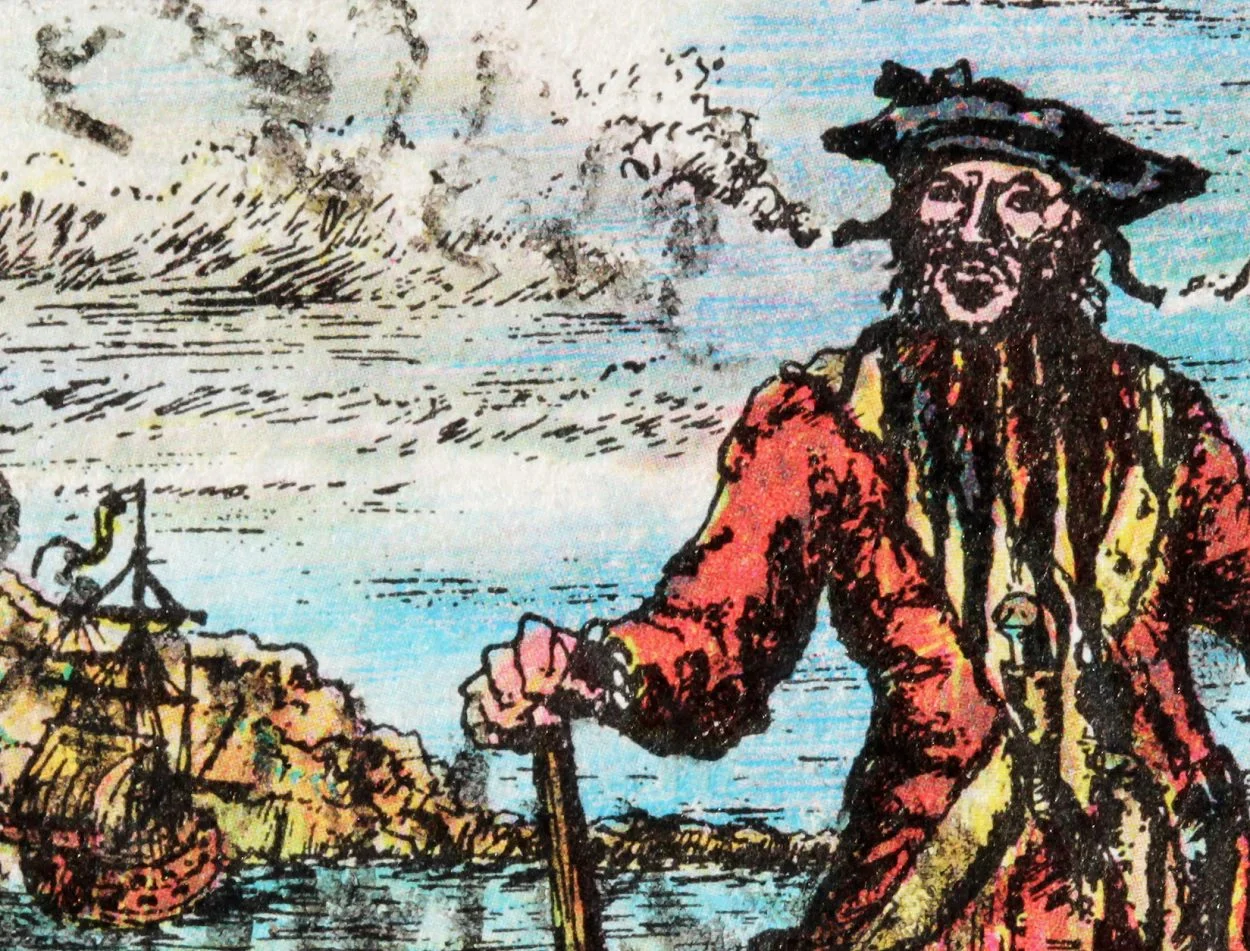A study by the University of Kentucky has solved the origins of the coal found on Blackbeard’s Queen Anne’s Revenge.
Edward Teach, better known as Blackbeard, was an English pirate who operated around the West Indies and the eastern coast of Britain’s North American colonies.
Blackbeard earned his nickname due to his thick black beard and intimidating presence. He was known to tie lit fuses (slow matches) under his hat which instilled fear in his opponents.
Around 300 years ago, Blackbeard seized a French slave ship named La Concorde and renamed her as Queen Anne’s Revenge, arming her with 40 guns and manning her with a crew of around 400 men.
In 1717, the ship hit a sandbar near Beaufort, North Carolina, in the present-day Carteret County. The ship was rediscovered in 1996 by Intersal Inc in 8.5 m of water, about one 1.6 km offshore of Fort Macon State Park, Atlantic Beach, North Carolina.
Currently, over 300,000 artefacts have been retrieved from the wreckage and around 30 cannons. The cannons originate from various places, such as Sweden and England, and come in different sizes, which is typical for a pirate crew during colonial times.
The International Journal of Nautical Archaeology recently published the findings of researchers who aimed to determine the source of the coal found on the historic shipwreck.
James Hower from the UK Centre for Applied Energy Research (CAER) and Department of Earth and Environmental Sciences in the College of Arts and Sciences, said: “We wanted to figure out where this coal on the shipwreck might have come from in that particular era before there was any real coal mining of any sort in this country.”
Archaeologists previously discovered that coal was distributed evenly throughout the excavation site, leading them to find samples present in corroded iron and other parts of the wreckage.
Four samples of the coal were sent for further analysis at CAER’s Applied Petrology Laboratory to determine the coal rank. Coal is classified into four main ranks, or types, which depend on the amount of carbon the coal contains and the amount of heat energy it can produce.
The coal samples displayed a wide range of quality, with some being low volatile bituminous coal (87-90% carbon) and others being anthracites (above 90% carbon).
“Low volatile bituminous coal is generally found in Virginia. It’s good for cooking and was also used on steamships because that type of coal doesn’t give off smoke when it burns,” explained Hower. “Anthracite is not the most common coal rank found anywhere, much less in the U.S. All the anthracites here come from Pennsylvania.”
Another key to solving this mystery is knowing what time those sources of coal were active.
“Simply, the coal samples post-date the Queen Anne’s Revenge grounding. In a 19th- or 20th-century setting, the easiest explanation for the source of both types of coal could have been in the Appalachians, but the mining there didn’t exist in the period we’re looking at. Plus, European settlers did not discover Pennsylvania anthracite until maybe the later part of the 1760s and real, legitimate mining didn’t happen until the 1800s,” said Hower.
According to the researcher, the post-date coal samples were likely dumped from U.S. Navy ships in the Civil War after Union troops captured nearby Fort Macon on April 26, 1862.
There was a heavy influx of ship traffic at that time, especially during the Union’s blockade of Wilmington, North Carolina — a major port for the Confederacy and the last one to fall in February of 1865.
Natural forces, such as waves, tidal currents, tropical storms, and hurricanes, also played a role in how the coal ended up settling in and around the Queen Anne’s Revenge. This is due to the frequent shifting of inlets and sand shoals along the Outer Banks over time.
Archaeologists from the University of Kentucky explained that the same movement is responsible for intrusive items finding their way onto the shipwreck, like 19th-century glass and ceramic artefacts, as well as 20th-century coins, soda bottles and even golf balls.
https://doi.org/10.1080/10572414.2022.2101775
Header Image Credit : Shutterstock





